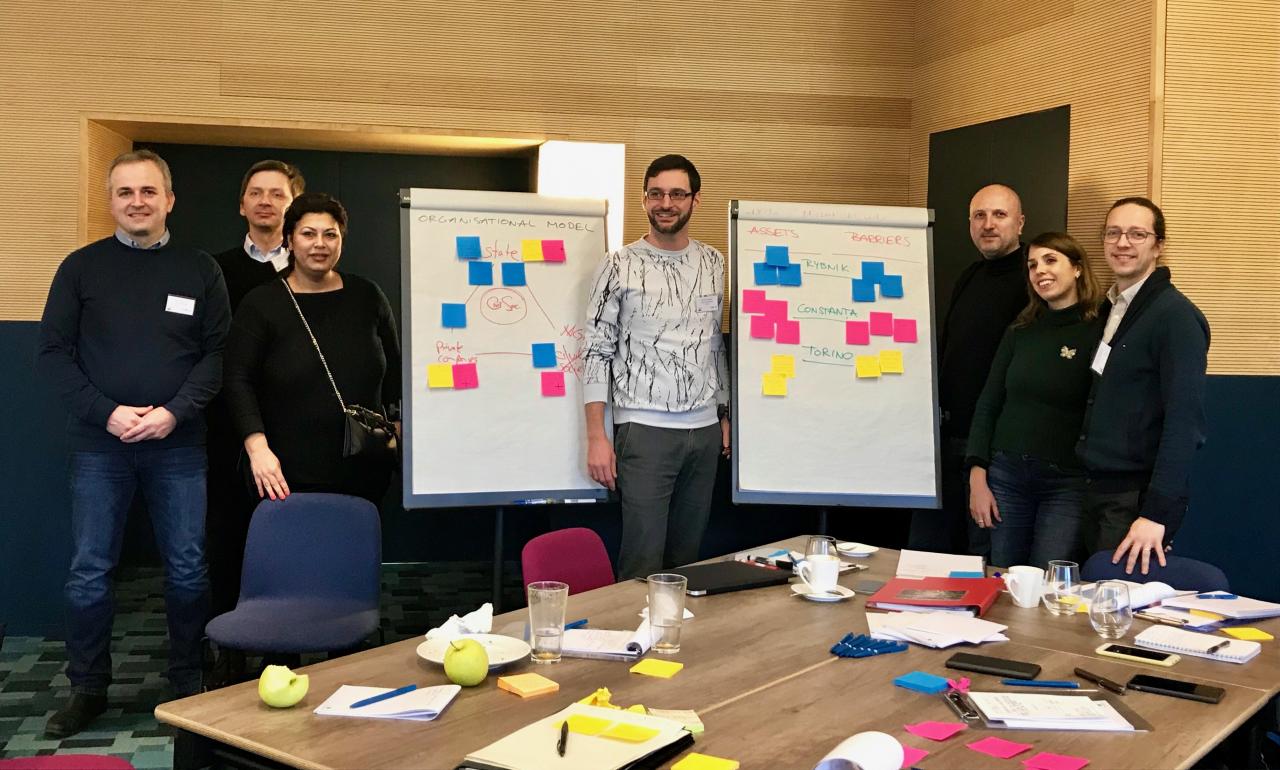
This was the key answer and lesson learnt from the ALT/BAU partners about Chemnitz URBACT good-practice “CityLiving agency”.
ALT/BAU Lead Expert Nils Scheffler and Martin Neubert, in charge of Chemnitz's good-practice, the "CityLiving agency' tell you more about it.
At the first thematic meeting of the ALT/BAU network in Seraing, January 2019, the partners exchanged and discussed existing organisational models and tasks of institutions responsible for the reactivation of vacant buildings and flats.
Partners provided their experiences:
- Rybnik presented their municipal housing unit,
- Seraing presented the autonomous municipality-controlled company ERIGES,
- Riga presented their Commission of Inspection of Degraded Buildings.
- Chemnitz presented their CityLiving agency, an URBACT good-practice.
All this was reflected by the partners in two parallel workshops, discussing tasks and responsibilities of such a body / institution as well as pros & cons of different organisational models.
An ‘Alternative Building Activation Unit’ for the reactivation of vacant buildings has to become THE information & Communication Hub, providing advisory and consultancy services in support of the reactivation of the vacant buildings. As important tasks were identified:
- Supporting stakeholders: Activate, connect and coordinate stakeholders for reactivation / reuse
- Monitoring: Gain overview about vacant buildings and flats
- Public safety: Ensure public safety of vacant buildings
- Owners, investors, users: Inform and advise owners and potential investors and users
Different organisation models were discussed to fulfil these tasks, i.e. a unit within the city administration, a public owned private/social company or hiring an existing private/social company or NGO.
The workshops provided the partners a very good understanding what the tasks of such a body / institution to support the reactivation and reuse of vacant apartment buildings and flats might be and the different potential organisational models. The results of the workshops you find here.
The URBACT transfer network ALT/BAU unites seven European cities in their effort to support the reactivation and reuse of vacant residential buildings and flats in their cities; this by transferring and adapting the good-practice model of Chemnitz’s ‘Housing agency’. With this purpose, they meet at transnational meetings to learn and exchange about the transfer and adaptation of Chemnitz’s good-practice and other good-practices of the city partners. |
